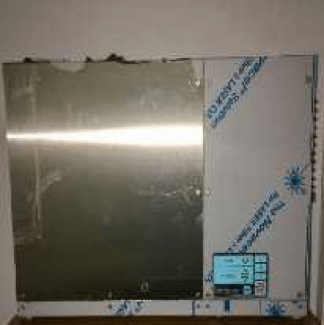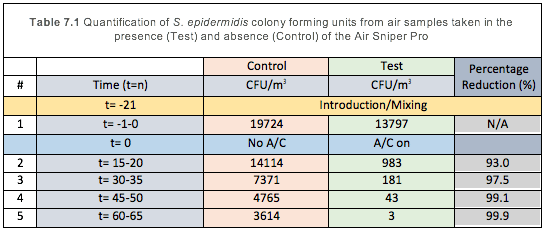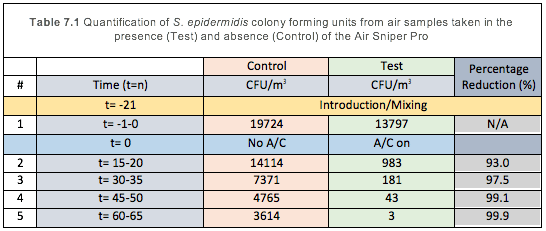Airmid Final Laboratory Report: Staphylococcus

| Test Requested | Staphylococcus epidermidis Removal |
| Sample Description | Air Sniper Pro air cleaners |
| Number of Samples | 3 |
| Date of Receipt | 18 August 2016 |
| ASC Code | ASC003339 |
| Report Number | ASCR092187 |
| Report Date | 09 January 2017 |
1. Purpose
2. Background
3. Abbreviations used in this report
A/C: air cleaner
CFU/m3: colony forming units per cubic meter (in this report, the level of airborne bacteria)
CFU: colony forming units
N/A: Not applicable
4. Test Item Description

5. Materials and Methods
5.1. Environmental Testing Chamber

5.2. Staphylococcus epidermidis
6. Protocol
The environmental chamber was preconditioned to a temperature of 21 °C and a relative humidity of 50 %. The chamber was then shut down to allow for no air changes to occur during testing. S. epidermidis was nebulised into the chamber and allowed to mix over a 20-minute period.
Airborne samples were taken immediately after nebulisation to determine the initial concentration. For the test runs, the air cleaner was operated at the highest fan speed for a 65-minute period at T = 0, with airborne sampling occurring at T = 15 – 20, T = 30 – 35, T= 45 – 55, T = 60 – 65. For the control runs the same sampling time points were used except in the absence of the Air Sniper Pro. At the end of each run, the samples were incubated at 36.5 °C for 48 hours. The environmental chamber was vented with HEPA filtered air and sterilised with a UV-C lamp, and washed with a disinfectant before the next run.
After 48 hours, the samples were removed from the incubator and analysed to determine number of CFU/m3.
The test and control runs were performed in triplicate.
7. Results



